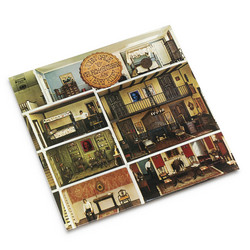John Cale
After leaving the Velvet Underground, Cale worked as a record producer on a number of albums, including Nico's The Marble Index, Desertshore and (later on Island) The End. On these he accompanied Nico's voice and harmonium using a wide array of instruments to unusual effect. He also produced The Stooges' self-titled debut. He appeared on Nick Drake's second album, Bryter Layter, playing viola and harpsichord on two of the album's tracks. While meeting with producer Joe Boyd, he came across Drake's music and insisted on collaborating with him. After a quick meeting, they wrote "Northern Sky" and "Fly".
In 1970, in addition to his career as a producer, Cale began to make solo records. His first, the pastoral Vintage Violence, is generally classified as folk-pop. Shortly thereafter, his collaboration with another classical musician, Terry Riley, on the mainly instrumental Church of Anthrax, was released, although it was actually recorded almost a year prior. His classical explorations continued with 1972's The Academy in Peril
In 1970, in addition to his career as a producer, Cale began to make solo records. His first, the pastoral Vintage Violence, is generally classified as folk-pop. Shortly thereafter, his collaboration with another classical musician, Terry Riley, on the mainly instrumental Church of Anthrax, was released, although it was actually recorded almost a year prior. His classical explorations continued with 1972's The Academy in Peril
After leaving the Velvet Underground, Cale worked as a record producer on a number of albums, including Nico's The Marble Index, Desertshore and (later on Island) The End. On these he accompanied Nico's voice and harmonium using a wide array of instruments to unusual effect. He also produced The Stooges' self-titled debut. He appeared on Nick Drake's second album, Bryter Layter, playing viola and harpsichord on two of the album's tracks. While meeting with producer Joe Boyd, he came across Drake's music and insisted on collaborating with him. After a quick meeting, they wrote "Northern Sky" and "Fly".
In 1970, in addition to his career as a producer, Cale began to make solo records. His first, the pastoral Vintage Violence, is generally classified as folk-pop. Shortly thereafter, his collaboration with another classical musician, Terry Riley, on the mainly instrumental Church of Anthrax, was released, although it was actually recorded almost a year prior. His classical explorations continued with 1972's The Academy in Peril
In 1970, in addition to his career as a producer, Cale began to make solo records. His first, the pastoral Vintage Violence, is generally classified as folk-pop. Shortly thereafter, his collaboration with another classical musician, Terry Riley, on the mainly instrumental Church of Anthrax, was released, although it was actually recorded almost a year prior. His classical explorations continued with 1972's The Academy in Peril
